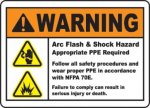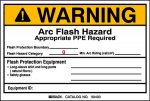Boltbreaker2014
Member
- Location
- Fernley, Nv
I supervise electricians in an industrial environment. The facility has about 626 electrical enclosures ranging from 120VAC outlets to Main Dist. Gear of 2500 amps 480VAC. My employer has been reluctant to pay for an AF analysis due to the cost. I have responded by requiring my electricians to gear up with AF gear to even open an enclosure of any kind. Pissing them off and slowing tasks down. I am not willing to trade their safety for speed or convenience. This issue came to a head recently with an OSHA visit. OSHA was very happy with the administrative controls I have put in place but still wrote a finding that we were not in compliance due to labeling issues. My reading of NFPA70e 2012 indicates that an study must be performed on every enclosure to indicate the incident energy, approach distance and level of gear requirement. My safety person (who is very political and whose budget a study would come out of) claims that the tables in 2012 are sufficient to determine the three key items. I cannot see how a 480VAC, 30 amp disconnect is the same as a 1500amp machine control panel as far as available incident energy goes.
Please help me understand his position or help me gain ammo for a AF study done the specified way. Thanks!
Nice forum. Wish I had found it sooner!
Please help me understand his position or help me gain ammo for a AF study done the specified way. Thanks!
Nice forum. Wish I had found it sooner!



